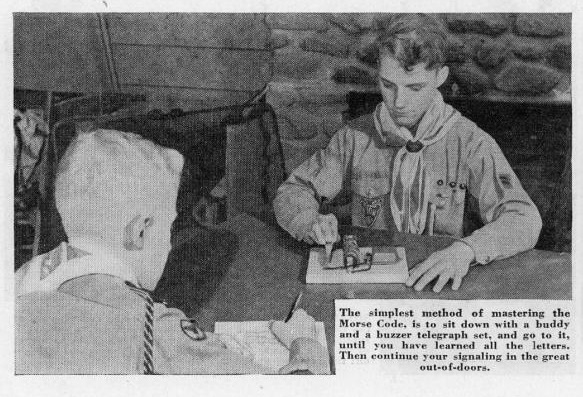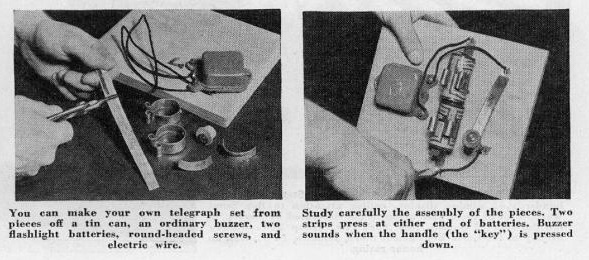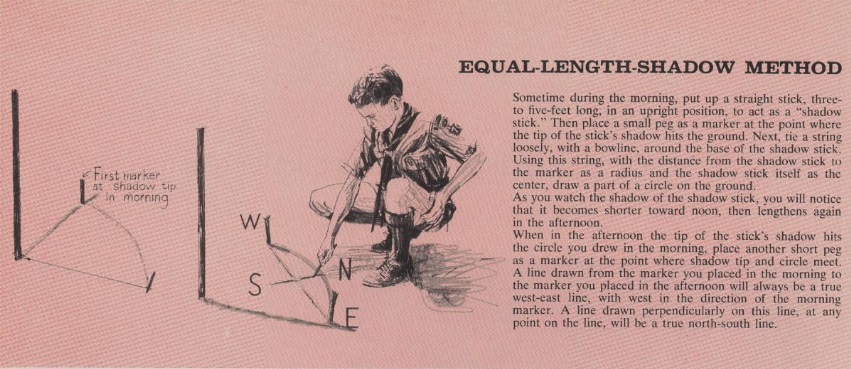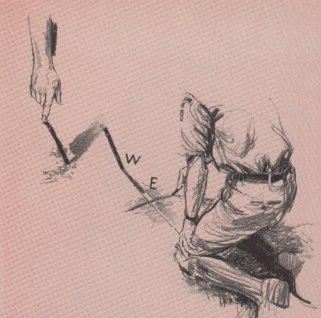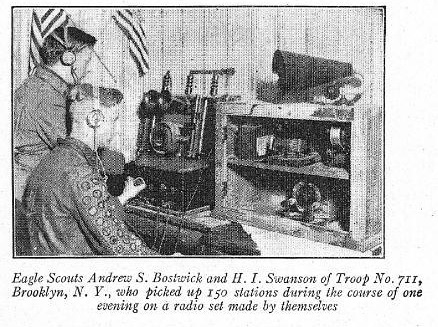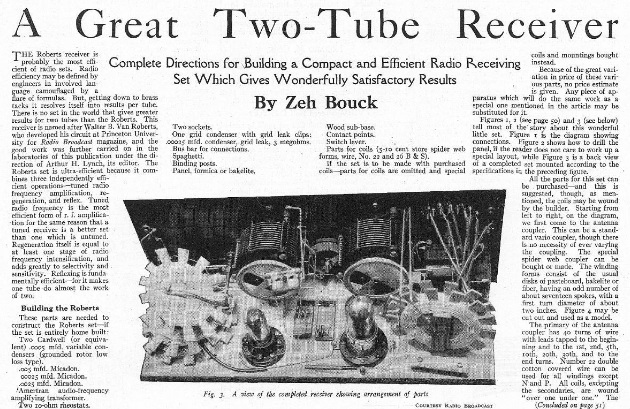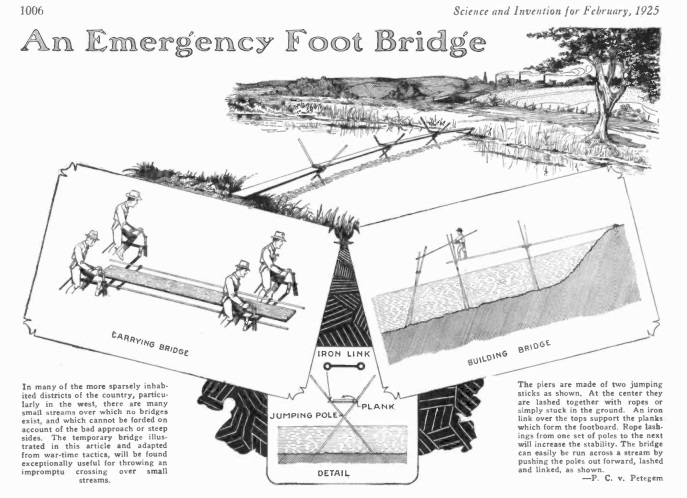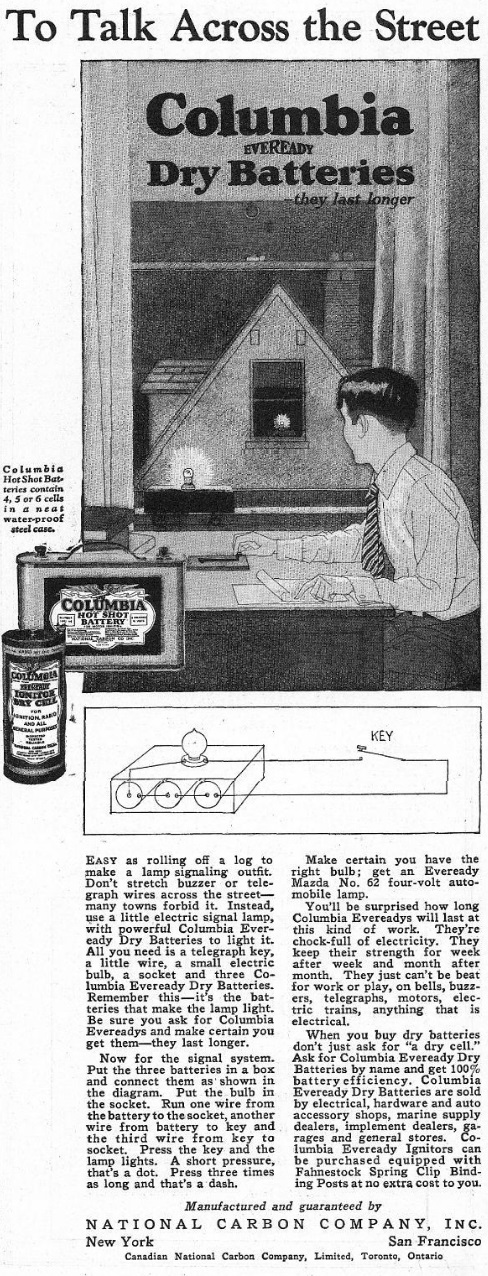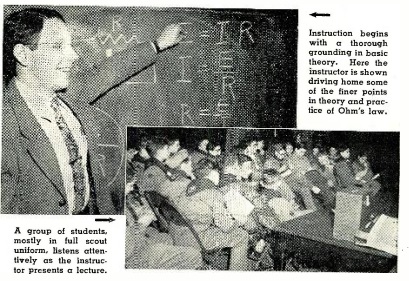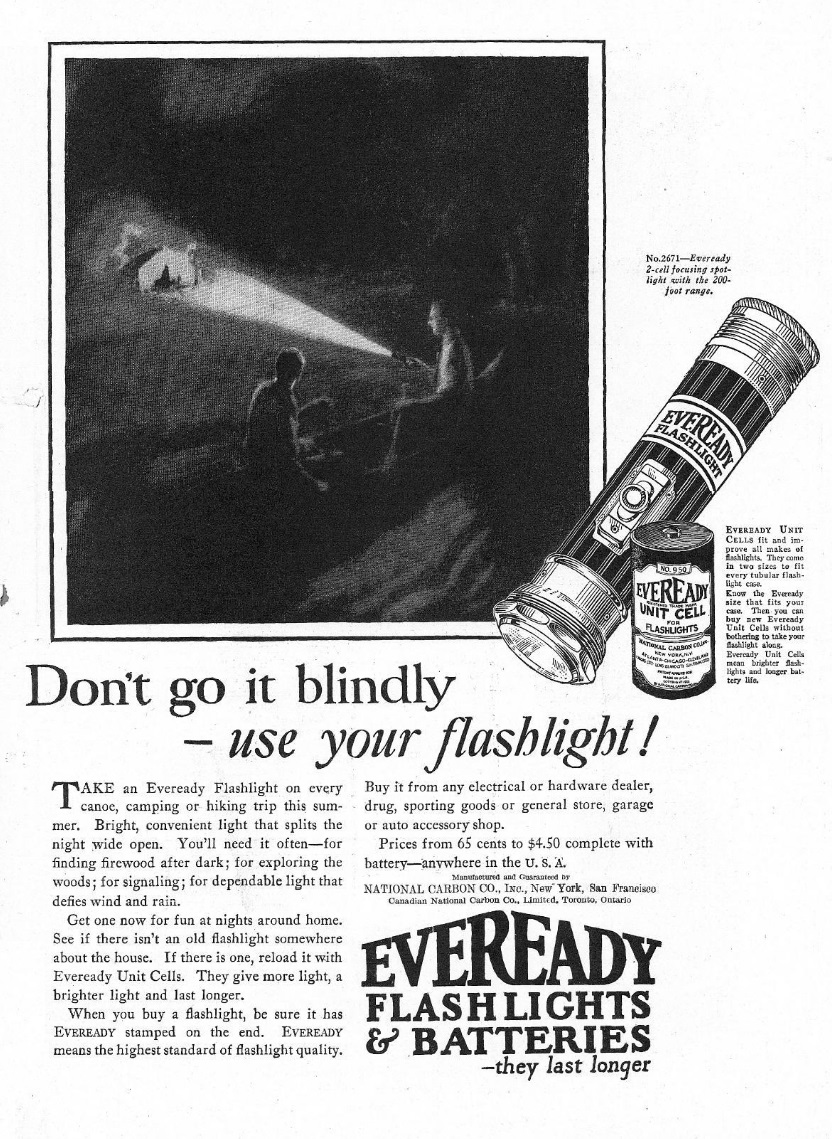 Seventy years ago, this scout, named Scott, had just received his very own portable radio, a gift from his father after earning First Class. It’s the envy of his friend, and Scott recounts how he can listen at camp, on family picnics, or plugged in in his room. The set had three-way power, meaning that it could run on AC, DC, or from the battery.
Seventy years ago, this scout, named Scott, had just received his very own portable radio, a gift from his father after earning First Class. It’s the envy of his friend, and Scott recounts how he can listen at camp, on family picnics, or plugged in in his room. The set had three-way power, meaning that it could run on AC, DC, or from the battery.
We don’t recognize the model, but perhaps one of our readers can enlighten us. The ad appeared in the May 1955 issue of Boys’ Life.

